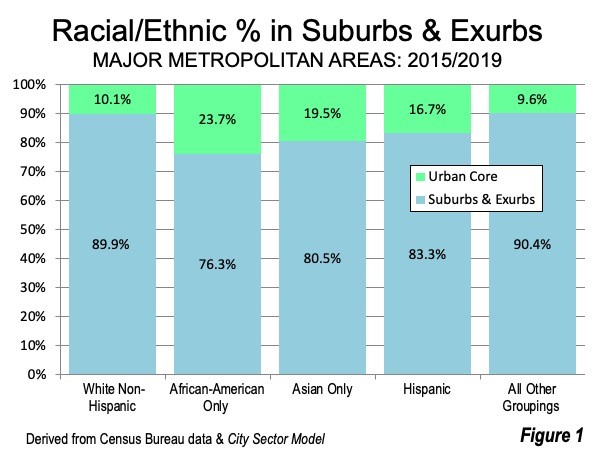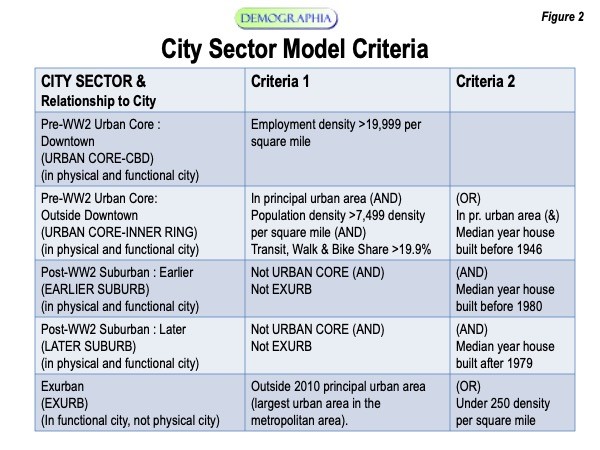Figure 1 below shows the share of the major minorities living in either the urban core or the suburbs of the 51 metropolitan areas included in the City Sector Model. It is based on 2015-2019 zip code data and the urban form as defined in Figure 2 (which is independent of municipal boundaries).
Today, a majority of each large minority lives in the suburbs and exurbs, ranging from African-Americans (76.3%), to Asians (80.5%) to Hispanics (83.3%). These figures nearly equal the 90% of White-Non-Hispanics who live in the suburbs and exurbs (Figure 1). This is nothing new. By 2000, more than two-thirds of African-Americans lived in the suburbs and exurbs and more than three quarters of Asians and Hispanics. The suburban exodus, often called “white flight” has long since evolved into “Black flight,” “Asian flight” and “Hispanic flight.”


The Demographia City Sector Model uses improved data from the American Community Survey, which made it possible to better separate urban core, suburban and exurban life styles and functions within metropolitan areas. Before, nearly all urban core, suburban and exurban analysis within metropolitan areas was based on municipal or county jurisdictions. The problem was, however, that nearly all new development since World War II had been lower density, principally single-family houses, while the automobile quickly replaced much of the commuting that had been previously been on transit or on foot. For the most part, the only core municipalities that annexed substantially have grown since World War II, and that growth has been suburban in character.
The Demographia City Sector Model classifies zip code (postal code) residents based principally on population densities and extent of automobile commuting into five functional classifications, which are indicated in Figure 9. The intent is to separate the pre-World War II portion of metropolitan areas from the suburban development that has dominated since that time.
Wendell Cox is principal of Demographia, an international public policy firm located in the St. Louis metropolitan area. He is a founding senior fellow at the Urban Reform Institute, Houston, a Senior Fellow with the Frontier Centre for Public Policy in Winnipeg and a member of the Advisory Board of the Center for Demographics and Policy at Chapman University in Orange, California. This blog was reprinted from New Geography with his permission.

